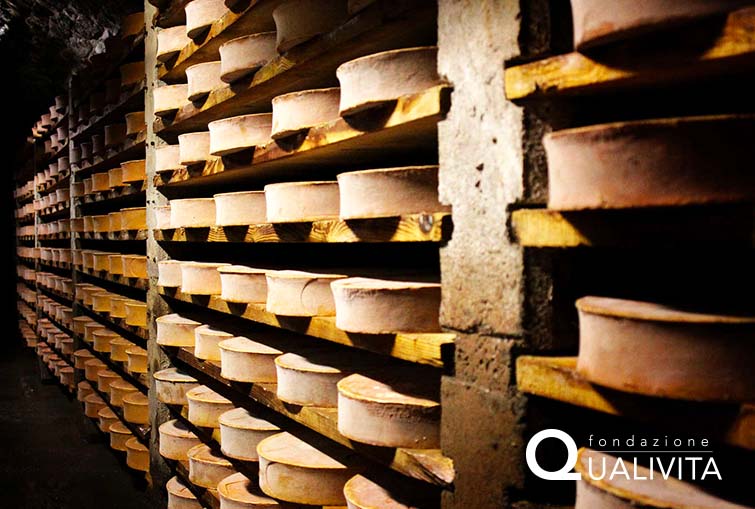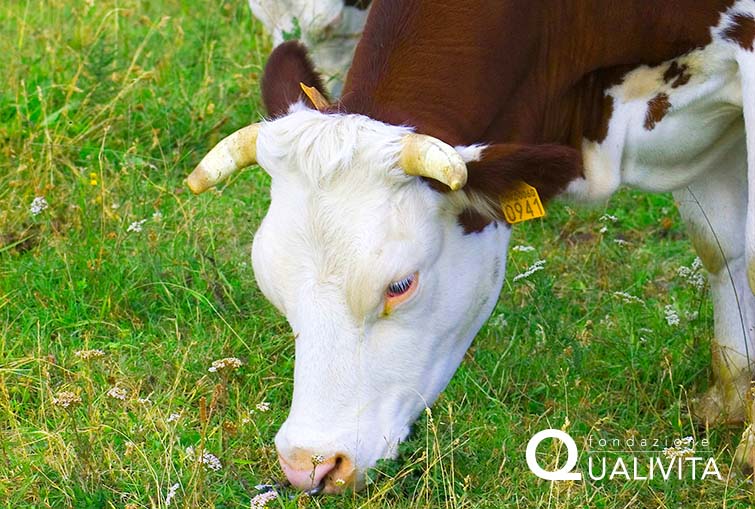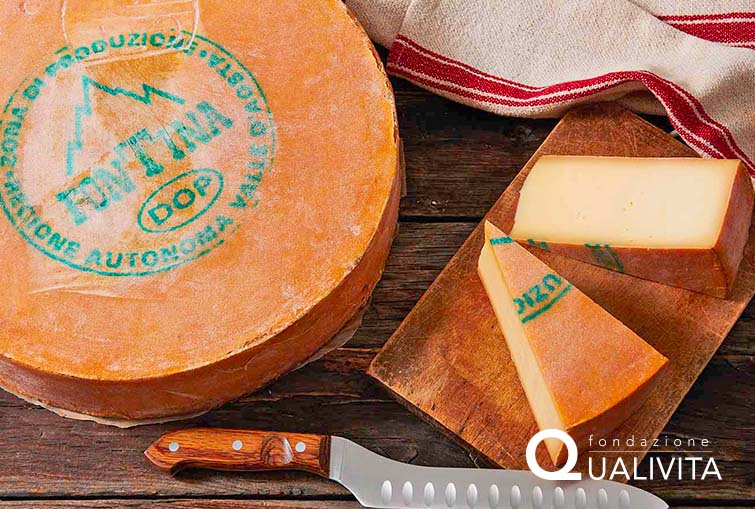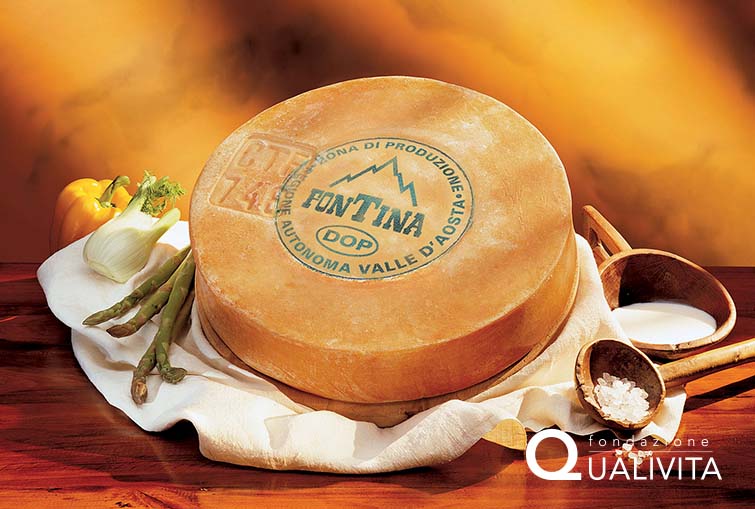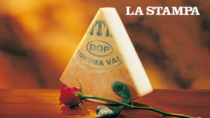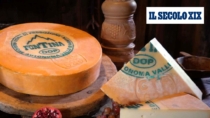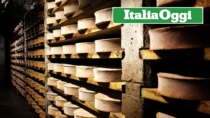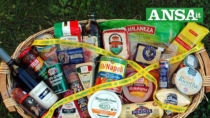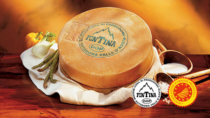Description
Fontina PDO is a semi-cooked cheese, obtained from whole cow’s milk produced by Valdostana cattle breeds (Pezzata Rossa, Pezzata Nera and Castana).
Production Area
The production area of Fontina PDO is within the entire territory of the autonomous region of Valle d’Aosta.
Production Method
Whole raw milk is used for production and it must be processed within a few hours of milking. The milk is brought to a maximum temperature of 36 °C and is curdled with calf rennet. The curd is broken until the grains are the size of corn kernels, after which it is reheated for about half an hour until it reaches a temperature of 48 °C, stimulating the expulsion of the whey. At the end of this stage, known as the “spinatura”, it is left to rest for 10 minutes, after which it is placed in moulds containing the casein marker with the progressive product number; it is then pressed for about 12 hours while being constantly turned. Before the last turn, the identifying mark of the Fontina Protection Consortium (CTF), which also indicates the producer’s ID code, is imprinted on one of the flat faces of the wheel. The cheese is then salted and ripened in natural cool, damp caves for at least three months.
Appearance and Flavour
Fontina PDO has a thin, firm rind; it is brown, varying in intensity depending on the level of ripening. The semi-cooked cheese is soft and springy, with characteristic eyes scattered throughout; it is rich on the palate and its colour ranges from ivory to a more-or-less intense straw-yellow. It has a sweet and delicate flavour.
History
The name “fontina” recurs frequently in historical documents on the Valle d’Aosta. Since the mid-1200s there is evidence of the De Funtina family, and 100 years later there is mention of the De Fontines. The use of the name for indicating different places, such as fields, land and villages, is also well-documented. Looking through the archives, the name “Fontina” being used to refer to cheese instead of the term vacherinus, combined with the milk derivative seras, is a gradual process, and it has only been unequivocally used for this characteristic cheese since the 18th century. For many centuries Fontina was only produced in the highlands, where it was possible to obtain large quantities of milk. During the winter most of the local families only had a few cows. Dairies were only built at the beginning of the 19th century, and milk for processing was then pooled with a cooperative spirit. Fontina PDO is therefore an offspring of the mountains, and took its name from the Valle d’Aosta’s noble houses and recurring toponyms.
Gastronomy
Fontina PDO keeps well in humid environments of 10-12 °C, preferably stored on wooden slats. If kept in the refrigerator, it should be put in food-grade bags and placed in least cold compartment, with the cut end covered in foil; the cheese should be taken out of the refrigerator about one hour prior to consumption. It can be used as a table cheese or as an ingredient in other dishes. The most well-known dish with Fontina PDO is without doubt the Valdostana fondue. It is often used as an ingredient in crostini, starters and first courses (polenta, gnocchi, stuffed pancakes, etc.), but it also makes a great snack on its own. It pairs beautifully with white wines and light rosés and reds.
Marketing
The product is marketed as Fontina PDO. It is sold year-round in whole wheels, wedges, and pre-packed slices.
Distinctive Features
During the first month of ripening, Fontina PDO is turned every day, alternating between one day of salting and one day of brushing; these processes promote the development of Fontina PDO’s characteristic rind.






